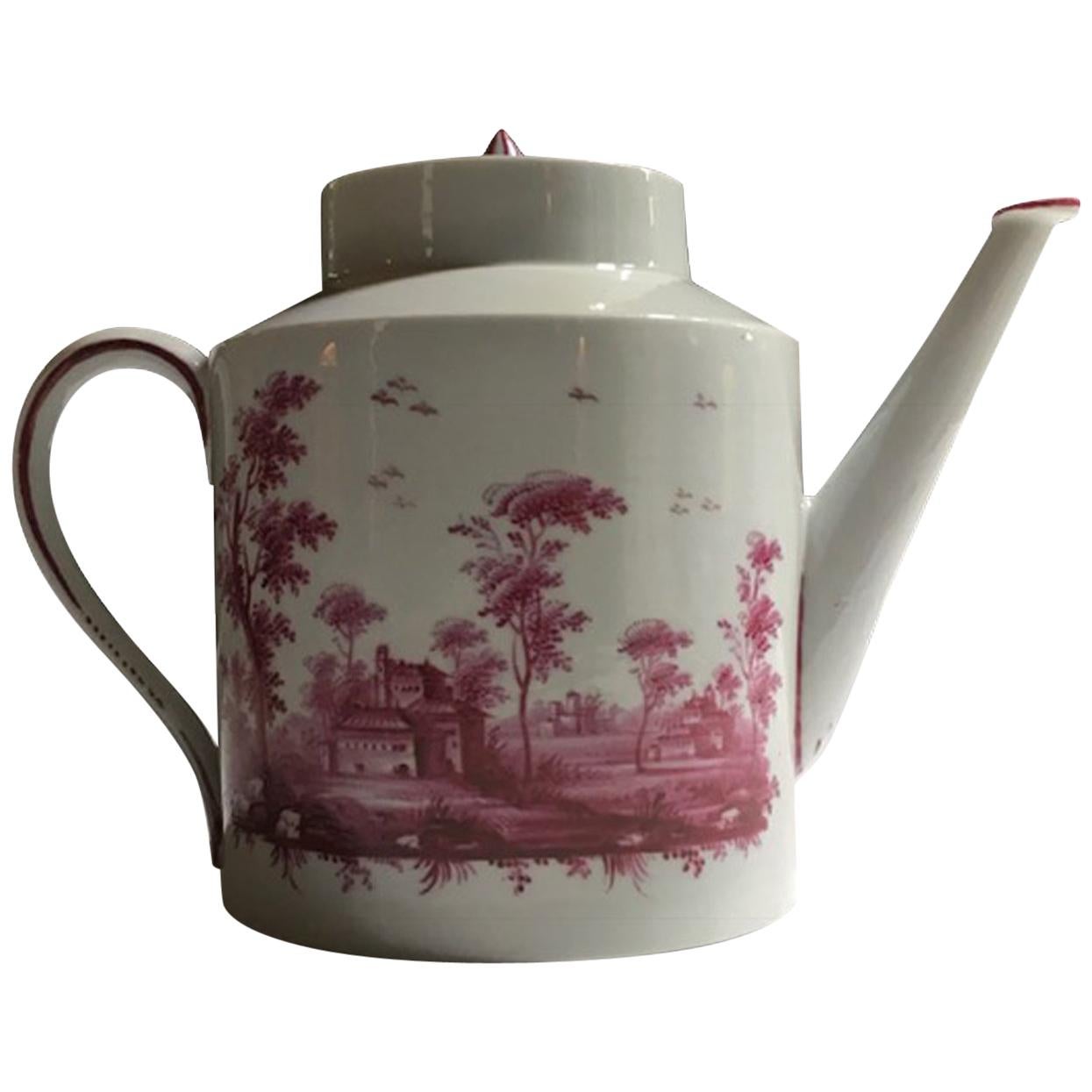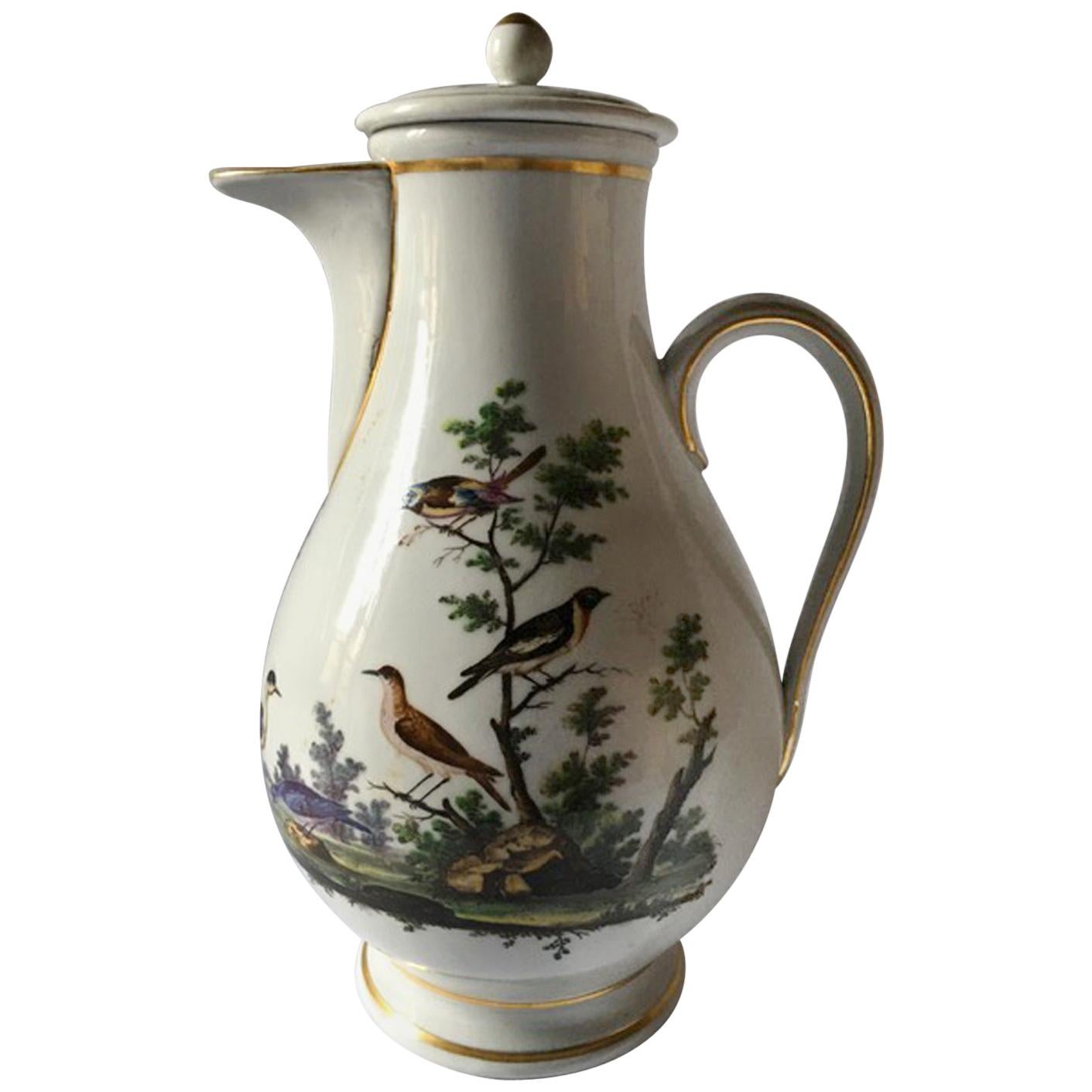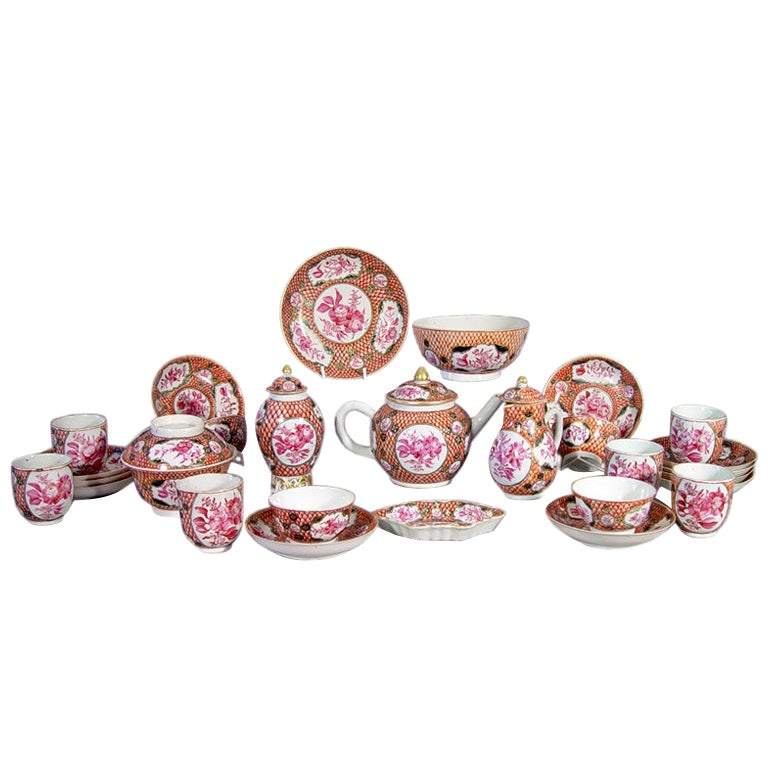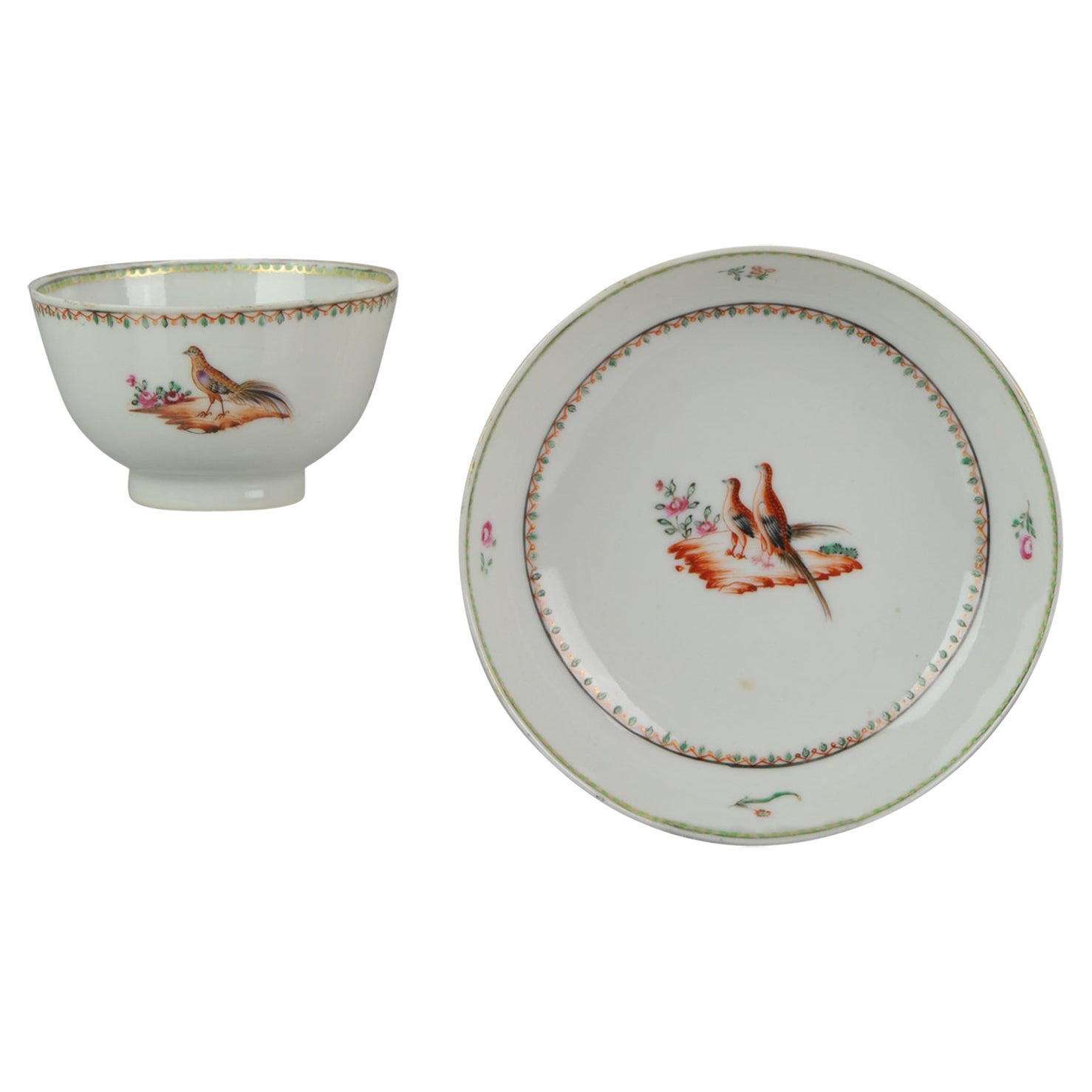Items Similar to Antique 18th Century Chinese Export Qianlong Porcelain Chocolate Tea Pot
Want more images or videos?
Request additional images or videos from the seller
1 of 13
Antique 18th Century Chinese Export Qianlong Porcelain Chocolate Tea Pot
About the Item
"Antique late 18th to early 19th century Chinese Export (Qianlong Period, circa 1780) floral famille rose Armorial porcelain hot chocolate pot or chocolatière.
History of the Chocolate Pot:
The human love affair with chocolate extends back thousands of years, but the options for consuming chocolate weren’t always so abundant. When the Spanish first introduced the treat to Western Europe in the 17th century, there was really only one: hot chocolate. It was prepared in its very own vessel, the chocolatière, or chocolate pot.
At that time—centuries before the advent of pulverization, emulsification or any of the other industrial processes that would make chocolate widely available in its current forms— drinking hot chocolate was the easiest and tastiest way to indulge in this luxury import.
“I think that chocolate—particularly when mixed with sugar—was very readily appealing to almost any taste,” says Sarah Coffin, curator and head of the product design and decorative arts department at the Cooper Hewitt, Smithsonian Design Museum. “I suspect that tea and coffee people acquired tastes for but perhaps were a little less easy to immediately embrace.”
Preparing hot chocolate entailed a process distinctive from the other beverages popular at the time. Rather than infusing hot water with coffee grounds or tea leaves and then filtering out the sediment, hot chocolate required melting ground cacao beans in hot water, adding sugar, milk and spices and then frothing the mixture with a stirring stick called a molinet.
When Louis XIII married Anne of Austria in 1615, the queen’s enthusiasm for chocolate spread to the French aristocracy. During that early modern period, the French had refined the dining experience to the point of extravagance. In that spirit, they crafted the chocolatière, a vessel uniquely suited to preparing chocolate.
In reality, the origins of the chocolate pot date back to Mesoamerica, where traces of theobromine—the chemical stimulant found in chocolate—have been found on Mayan ceramic vessels dating back to 1400 B.C. But the chocolate pot that set the standard for Europe, however, looked nothing like the earthenware of the Americas. It sat perched on three feet, with a tall, slender body, and an ornate handle at 90 degrees from the spout. Most important was the lid, which had a delicate hinged finial, or cap, that formed a small opening for the molinet.
“It was inserted to keep the chocolate frothed and well-blended,” says Coffin of the utensil. “Because unlike the coffee I think that the chocolate tended to settle more. It was harder to get it to dissolve in the pot. So you’d need to regularly turn this swizzle stick.”
It was this hinged finial that came to define the form. “You can always tell a chocolate pot and the way you can tell is because it has a hole in the top,” says Frank Clark, master of historic foodways at the Colonial Williamsburg Foundation, who makes colonial-style chocolate—and sometimes, hot chocolate—for guests.
In the 17th and 18th centuries, chocolate pots were mostly made of silver or porcelain, the two most valuable materials of the time. “Chocolate was considered exotic and expensive,” says Coffin. “It was a rare commodity and so it was associated with luxury objects such as silver, and of course in the early days, porcelain.”
As chocolate spread throughout western Europe, each country interpreted the vessel according to their own tastes. Vienna became known for its elegant chocolate and coffee sets. Many German chocolate pots, including several in the Cooper Hewitt’s collection from the mid-to-late 18th century, featured gilded, Chinese-inspired designs known as Chinoiserie.
“They suddenly had this new beverage and took it back to their courts. So then things were made in the different courts, so you get things made in Austrian porcelain or German porcelain and French ceramics and silver and so forth,” says Coffin.
Americans, too, had a thirst for chocolate, which they began drinking in the 1660s, soon after England acquired its own chocolate pipeline, Jamaica, in 1655. Chocolate pots weren’t often produced in the United States, but Coffin says the European imports were of extremely high quality because the wealthy people who purchased them wanted to keep up with the latest continental fashions.
In Europe and the United States, drinking hot chocolate became both a public and private practice. Around the end of the 17th century, chocolate and coffee houses cropped up that served as a meeting spot for lawyers, businessmen, and politicos well into the 18th century. In New England, Clark says those in charge of setting the price of tobacco and other important commodities were known to gather at a chocolate/coffee house to do so.
In private, chocolate was associated with the bedroom, as it was popular to drink first thing in the morning as well as in the evening before bed. A painting by French artist Jean-Baptiste Le Prince from 1769 depicts a woman lying in bed, reaching out for her departed lover, the morning light illuminating her figure. A chocolate pot and cups sit by her bedside. According to the book Chocolate: History, Culture, and Heritage by Louis E. Gravetti and Howard-Yana Shapiro, such images led to chocolate being associated with a leisurely lifestyle. This imbued the beverage with an added air of luxury.
As soon as the Industrial Revolution arrived, that started to change. Chocolate makers developed a method of using hydraulic and steam chocolate mills to process chocolate faster and at a lower cost. In 1828, Coenraad Johannes Van Houton invented the cocoa press, which removed the fat from cacao beans to make cocoa powder, the basis for most chocolate products today. Chocolate prices fell, and soon chocolate became a sweet that most everyone could afford.
The chocolate pot also evolved. Chocolate powder decreased the importance of the molinet, and chocolate pots began cropping up with finials that were stuck in place.
By the early 20th century, the golden age of hot chocolate had come and gone, but chocolate pots still enjoyed some popularity. In the late 19th and early 20th centuries, the Japanese had considerable success exporting porcelain chocolate pots and other wares to North America.
One example in the collections of the Freer and Sackler Galleries is a Satsuma style porcelain chocolate pot, fired with clear glaze and decorated with a colorful array of three-dimensional, enamel dots depicting a Buddhist scholar with his attendants. Ceramics curator Louise Cort says the scene is one of a few stock images commonly used at that time to cater to Western perceptions of Japanese culture.
Mineralogist A.E. Seaman purchased the piece at the 1904 World’s Fair in St. Louis. According to notes from his daughter, the family used the pot for tea rather than hot chocolate. This is not surprising; tea was growing more popular by then, and aside from the shape of the vessel, there is no removable finial that would indicate the pot should be used exclusively for hot chocolate. It could easily have been used to prepare other beverages.
By the 1950s, chocolate pot production died down. Very few, if any, are still made today, but one can still find virtually any style of chocolate pot online or in auction houses. Vessels ranging from pristine 17th-century French silver pots to Japanese Satsuma style ware sell regularly on eBay for anywhere from $20 to $20,000 dollars.
People like Clark at Colonial Williamsburg are managing to preserve the old chocolate tradition. In his demonstrations, he roasts the actual cacao beans, separates out the hard shell, and grinds the beans into a liquid paste. When he does prepare the actual beverage, he dissolves the chocolate in a traditional chocolate pot and adds sugar and spices.
“It really represents the way chocolate was made in colonial times for the very wealthy,” Clark says.
Those interested in imbibing true hot chocolate this Valentine’s Day can easily do so. It’s not hard to find an antique chocolate set and molinet for under $100, and many stores now sell cacao nibs, bits of roasted cacao beans that have been removed from their shells. Grind the nibs in a bowl or on a chocolate stone, and melt the paste in hot water, and you’ll be sipping hot chocolate in no time. (A few documented recipes are also available online from the hot chocolate heyday.)
As far as chocolate’s aphrodisiac powers go, research suggests that there’s very little validity to the lore. But all is not lost; Cort says hot chocolate would have been a worthy tool of seduction purely for the taste itself. “I suspect that… if you thought it had this [aphrodisiac] power and it was in any case sweet if you mixed a lot of sugar and vanilla with it, this would be a wonderful way to try and seduce somebody.”"
- Dimensions:Height: 7.75 in (19.69 cm)Width: 8 in (20.32 cm)Depth: 7 in (17.78 cm)
- Style:Chinese Export (Of the Period)
- Materials and Techniques:
- Period:
- Date of Manufacture:Late 18th Century
- Condition:Wear consistent with age and use. Good Overall - Some small stains; chips to lid edge.
- Seller Location:Dayton, OH
- Reference Number:
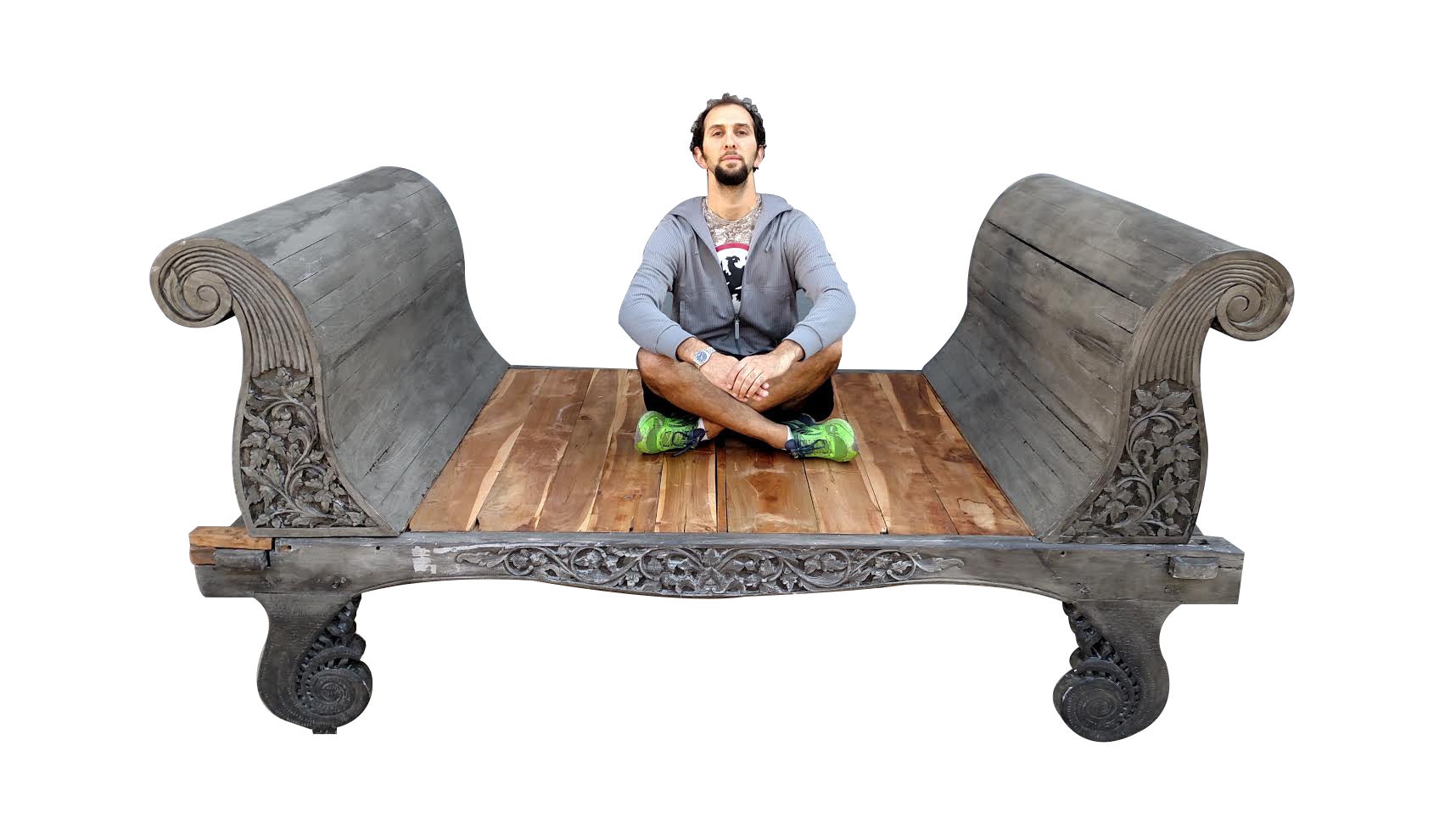
About the Seller
4.9
Platinum Seller
These expertly vetted sellers are 1stDibs' most experienced sellers and are rated highest by our customers.
Established in 2010
1stDibs seller since 2020
1,112 sales on 1stDibs
Typical response time: <1 hour
- ShippingRetrieving quote...Ships From: Dayton, OH
- Return PolicyA return for this item may be initiated within 2 days of delivery.
More From This SellerView All
- 2 Antique 18th Century Chinese Export Qianlong Famille Dinner Charger PlatesLocated in Dayton, OHPair of antique late 18th century to early 19th century Chinese export Qing (Qianlong Period, circa 1780) porcelain dinner plates with hand painted famille and lattice motifs. Measur...Category
Antique Late 18th Century Chinese Export Dinner Plates
MaterialsPorcelain
- Antique Haviland Offner Limoges France Tea Coffee Chocolate Pot Cups SaucersBy Haviland & Co.Located in Dayton, OH"12 piece Antique Haviland & Co Limoges tea / coffee / chocolate set for E. Offner of New Orleans LA. Features a hand painted pink, turquoise and gild...Category
Antique Late 19th Century Tea Sets
MaterialsPorcelain
- 2 Antique Meissen German Porcelain Lidded Chocolate Tea Cups & Saucers on StandsBy Meissen PorcelainLocated in Dayton, OH"Pair of exqusite antique 19th century Meissen porcelain demitasse chocolate cups with lids and saucers, decorated with pink and gold borders and landscapes with stone buildings. Both are beautifully displayed on wooden stands. Provenance : Jerome Schottenstein Estate, Columbus Ohio. Jerome was was an American entrepreneur and philanthropist, co-founder of Schottenstein Stores Corp. The Schottenstein family were Lithuanian immigrants who began an extensive business empire in the late 19th Century. Schottenstein Stores owns stakes in DSW and American Signature Furniture...Category
Antique Late 19th Century Victorian Tea Sets
MaterialsPorcelain, Hardwood
- 18th Century Antique English Sterling Silver George III Chocolate Pot Coffee TeaLocated in Dayton, OH"1782 Antique 18th century George III sterling silver chocolate pot or chocolatière. A beautiful sterling silver 925 / 1000 lidded pot featuring baluster form with baroque deisgn, wo...Category
Antique Late 18th Century George III Tea Sets
MaterialsSterling Silver
- 7 Antique 18th Century Chinese Export Qianlong Armorial Federal Porcelain ChinaLocated in Dayton, OHLot of seven late 18th to early 19th century Chinese Export (Qianlong Period, circa 1780) porcelain pieces in an American federal style with blue and gold motifs and armorial crest c...Category
Antique Late 18th Century Chinese Export Ceramics
MaterialsPorcelain
- 12 Antique Berlin Kpm Arkadia Urania White Porcelain Tea Coffee Cups & CaseBy Berlin Royal Porcelain FactoryLocated in Dayton, OH"Set of 12 circa 1930s Königliche Porzellan-Manufaktur white porcelain Urania teacups. The Royal Porcelain Factory in Berlin (German: Königliche Porzellan-Manufaktur Berlin, abbreviated as KPM), also known as the Royal Porcelain Manufactory Berlin and whose products are generally called Berlin porcelain, was founded in 1763 by King Frederick II of Prussia (known as Frederick the Great). Its actual origins, however, lie in three private enterprises which, under crown patronage, were trying to establish the production of ""white gold"" (i.e. porcelain) in Berlin from the mid-18th century onwards. The company logo is a cobalt blue sceptre, which is stamped (painted prior to 1837) on every piece. All painted pieces produced by KPM are signed by the painter. KPM is still producing to this day; each piece of dishware and decorative porcelain is entirely unique. KPM has produced a number of dishware forms and porcelain figurines throughout its history. Some forms have hardly changed their shape in over 200 years of production. Frederick the Great, who, as the owner, jokingly referred to himself as his own ""best customer"", was under the spell of the Rococo style during his life; a culmination of this artistic style can be seen in his castles. To this day, the most successful designs of the 1930s are the Urbino, Urania and Arkadia (originally a tea set designed in honor of KPM's 175th anniversary) created by Trude Petri...Category
Vintage 1930s Tea Sets
MaterialsPorcelain
You May Also Like
- Richard Ginori Late 18th Century Porcelain Tea Pot with Hand Painted LandscapesBy Richard GinoriLocated in Brescia, ITRichard Ginori Late 18th century porcelain tea pot with hand painted landscapes This very elegant tea pot was hand painted with views of Italian contrysides landscapes, in fuchsia c...Category
Antique Late 18th Century Italian Baroque Tea Sets
MaterialsPorcelain
- Italy Richard Ginori Mid-18th Century Porcelain Coffee PotBy Richard GinoriLocated in Brescia, ITIn this elegant coffee pot we can admire the elegant drawing with a natural landscape full of many specimens of birds. Manufactured in circa 1750, the piece has its time but it is i...Category
Antique Mid-18th Century Italian Baroque Porcelain
MaterialsPorcelain
- 18th Century, Chinese Export Coral and Puce Porcelain Tea ServiceLocated in Downingtown, PAChinese export porcelain service spectacularly decorated with a smart coral scale ground with panels of puce flowers. The service com...Category
Antique Mid-18th Century Chinese Chinese Export Tea Sets
MaterialsPorcelain
- Antique Chinese Porcelain Famille Rose Qianlong Bird Tea Bowl China, 18th CenLocated in Amsterdam, Noord HollandVery nicely decorated cup and saucer with birds. Late qianlong circa 1780-1800 Decorated with a bird scene. Similar decoration is found on a strainer in "Litzenburg, T. V. (2003). C...Category
Antique 18th Century Chinese Tea Sets
MaterialsPorcelain
- Antique Doccia Porcelain Italian Neoclassical Topographical Chocolate/Coffee PotBy Doccia PorcelainLocated in Philadelphia, PAA fine antique topographical porcelain coffee or chocolate pot. By the Doccia porcelain manufactory circa 1820. With painted enamel topograph...Category
Antique Early 19th Century Italian Neoclassical Porcelain
MaterialsPorcelain
- Antique Chinese Porcelain Jug Tea Pot Porcelain Yongzheng/Qianlong Famille RoseLocated in Amsterdam, Noord HollandSharing with you this nicely shaped and painted chinese porcelain jar. Additional information: Material: Porcelain & Pottery Category: Famille Rose Emperor: Qianlong (1735-1796), Yo...Category
Antique 18th Century Chinese Tea Sets
MaterialsPorcelain
Recently Viewed
View AllMore Ways To Browse
Chocolate Set
French Chocolate
Rare Book Sets
Antique Silver Tea Pot
Antique Silver Tea Pots
Silver Tea Pots Antique
Paintings Set In The 18th Century
High Tea Set
Antique Glass Tea Pots
Early American Dining Set
Antique German 18th Century
Spanish Style Dining Sets
Rare Tea Set
French Silver Tea Set
French Antique Bedroom French Bedroom Set
Antique Tea Pot Set
Tea And China Set
Antique French Bedroom Sets
